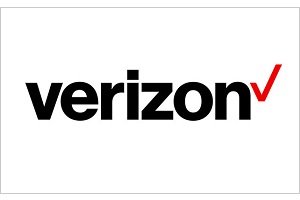Phoenix, Arizona – Verizon engineers continue to drive the evolution of 5G Ultra Wideband technology achieving 1.26 Gbps in upload speed. With uploading data becoming increasingly important for video chats, uploading large files or live streaming video, this effort is yet another milestone in Verizon’s commitment to provide a service for customers.
“We have achieved remarkable speed in downloading using various combinations of spectrum in our world-class spectrum portfolio,” says Adam Koeppe, senior vice president of technology planning at Verizon. “This new achievement indicates how much additional performance we can unleash for our customers on the uplink as we aggregate different combinations of spectrum.”
The lab work and trials in the field focused on optimising the customer experience, and used 20 MHz of LTE spectrum and 400 MHz of mmWave spectrum from the 28 GHz band. The trials used devices currently commercially available and were completed in a live network test environment.
Past trials have shown extraordinary download speeds with various combinations of spectrum reaching a remarkable 4.3 Gbps download speeds by aggregating Verizon’s mid-band C-band spectrum with high band mmWave spectrum. As more C-band spectrum becomes available and deployed, customers will continue to see increases in both download and upload speeds.
Integrating C-band
Verizon secures C-band licenses for between 140-200 MHz in all available markets, and began in the first 46 areas deploying up to 60 MHz, quickly expanding to an additional 30 markets deploying up to 100 MHz in many of those. Over the next few years, as additional spectrum is cleared by satellite companies, Verizon will be able to deploy 5G Ultra Wideband on all available bandwidth that it has licensed, up to 200 MHz. Every piece of equipment being deployed today is capable of using the full 200 MHz of bandwidth.
When the full breadth of spectrum is accessed, customers can expect peak download speeds to reach 2.4 gigabits per second, up from the 900 megabits per second experienced with 60 megahertz deployed, all while supporting far more users and applications. At the same time, the 5G stand-alone core is being deployed. So by the end of the year, customers should see a network with incredible speeds, both downlink and uplink.
Spectrum position, spectrum efficiency
With the recent acquisition of C-band spectrum, Verizon now provides the industry with the spectrum portfolio across low, mid and high band spectrum. Verizon holds a total of 2,035 MHz of spectrum – 294 MHz in Sub 6 GHz spectrum (low and mid band) and 1,741 MHz of mmWave spectrum (high band).
Low band: Verizon’s low band spectrum (nationwide 700 MHz licenses and 850 MHz spectrum) continues to provide the 4G LTE experience in the industry and now also supports nationwide 5G service, giving customers in over 2,700 markets access to 5G. Low band signals travel great distances and penetrate through walls and dense foliage very effectively.
High band: Verizon’s mmWave brings the benefits of highly predictable signal waves leading to greater efficiency and less interference for customers, and also boasts huge capacity. mmWave service is ideal to deliver 5G service in high-usage areas like cities, venues, and stadiums for years to come.
Mid-band: Verizon’s mid-band spectrum assets include AWS, PCS, CBRS and C-band spectrum. C-band provides a valuable middle ground between capacity and coverage for 5G networks, and is enabling greater speeds than 5G on low band spectrum and greater coverage than mmWave spectrum for both mobility and home broadband solutions. The addition of C-band spectrum paves the way for Verizon to provide its differentiated service of 5G Ultra Wideband service to millions of customers, now covering more than 175 million and growing quickly.
Comment on this article below or via Twitter: @VanillaPlus OR @jcvplus






